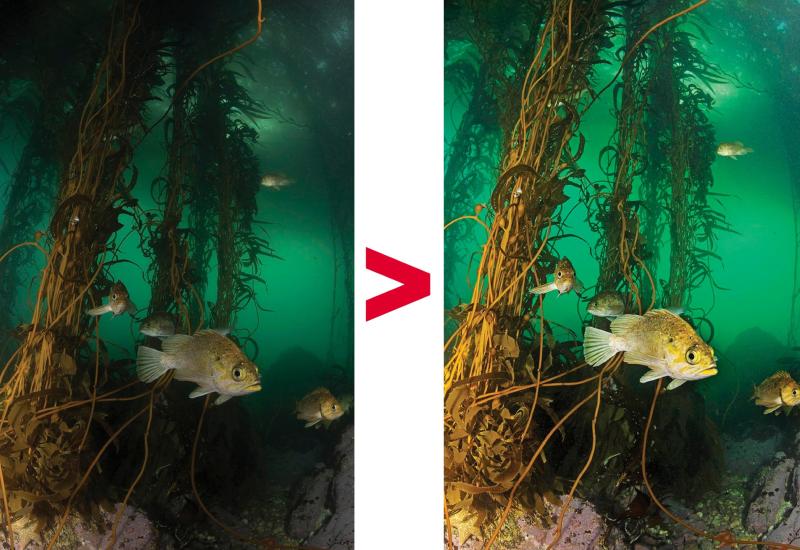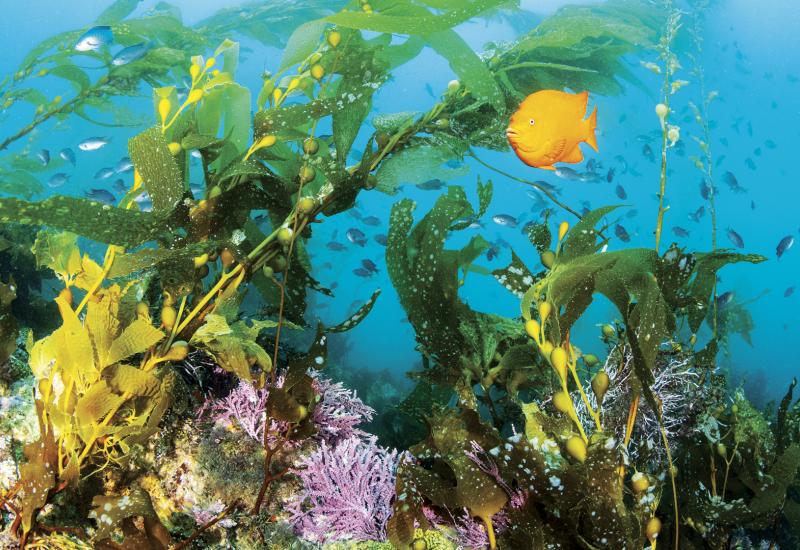How To Improve Your Underwater Photography By Improving Your Diving
Capturing the splendor of the underwater world in photographs and video can be rewarding for divers. However, shooters can become so engrossed that they forget (or ignore) the basic fundamentals of diving. In some cases, this often-blissful state of viewfinder distraction can turn dangerous — to the diver, buddies and the delicate ecosystem around them.

ShutterstockKeep the fundamentals of diving in mind while shooting.
“Many photographers have a narrow focus,” says Tanya Burnett, a South Florida underwater photography pro and instructor. “Their eyes beam toward a subject without really stopping to analyze the scene. Building your diving skills as you improve with your camera will greatly benefit your photography.”
“To produce good underwater images, diving must be second nature,” says underwater photographer Sterling Zumbrunn of Northern California. “You have to be able to get ‘into the zone’ as you focus on photographic technique to capture your subjects, and can’t spend as much mental energy on diving.”
“The more experienced I’ve become, the more patient I’ve become, and that has made me a more careful, thoughtful diver all around,” says Allison Vitsky Sallmon, an underwater shooter based out of San Diego. “Getting a great shot is a lot more rewarding to me when I’m proud of the way I’ve dived.”
According to these three photo pros, focusing on the foundations of sustainable and safe diving will benefit not only your safety and enjoyment, but also the quality of your images and video.
MASTER THE ART OF DIVE
No matter how strong your eye for composition, if your dive skills are lacking, you’ll never get the shot.
“Perfecting your buoyancy is critical,” Zumbrunn says. “It’s too easy to harm the very environment you are trying to capture with flawed diving technique.”
Says Vitsky Sallmon: “You should be able to hover without thinking about it. Adding other skills like the frog kick, modified flutter kick and back kick will also help you avoid disturbing the environment and your subject. You should be able to approach a subject, take photos, and back away without stirring up sand.”
“Varying dive conditions and learning new photo techniques will challenge the way you approach your subjects,” says Burnett. “Learning how to approach subjects from all angles teaches you how to move through the water better.”
“Bad behavior is common, such as destroying coral to take a photo, interfering with marine life, or barreling over a group of waiting divers to get to a creature first,” Vitsky Sallmon adds. “It’s this type of thing that gives underwater photographers a bad name.”
BE EXTRA MINDFUL
While your main focus will be on your subject, you can’t ignore what’s going on around you. In fact, underwater photographers need to observe an even-greater level of situational awareness than regular divers.
“Many photographers get wrapped up in their shooting, and either crash into the environment around them or lose track of time and risk doing harm to themselves by running out of air or unintentionally hitting decompression limits,” Zumbrunn says.
“The biggest mistake I see is photographers becoming more focused on shooting than on diving, which has led to every major issue I’ve witnessed,” says Vitsky Sallmon. “The most critical example is a lack of attention to safety: I have seen shooters run completely out of air, chase marine life to depths at which the mix they’re breathing is potentially toxic, and rack up so much decompression that an extra air tank has to be brought down to complete the stop. No image is worth getting hurt, or worse.”
“Having experience diving in all kinds of conditions is important,” Burnett says. “Being an aware diver allows you to add more tasks like handling a camera rig, taking photos of a range of subjects while still maintaining contact with your buddy, the environment and the overall dive itself.”
BECOME SELF-RELIANT
Unless working with a model, underwater shooters are typically a solo act. And that requires them to develop extra safety protocols in case they are separated from the group or accidentally have to surface alone.
“Like it or not, underwater photography tends to be a fairly solitary endeavor because the buddy system falls apart as you search for and photograph different subjects,” says Zumbrunn. “Furthermore, chasing after that perfect photographic opportunity can often lead to you being separated from your group, especially if you are in an area with strong currents. For these reasons, safety gear, including an SMB and a transmitter such as the Nautilus GPS, become essential, especially if diving in remote locations.”
“I often find myself being one of those photographers left behind, so I pay added attention to briefings and ask questions if there is a possibility that I might be lagging behind the group, to learn what my options are on the dive and to safely exit,” Burnett says. “I carry an SMB and reel to inflate at my safety stop and mark myself before surfacing.”
CONSIDER NEW TOOLS
Beyond that shiny new camera rig, underwater photographers can improve safety and performance with specialized equipment.
“While hotly debated, muck sticks can be used to keep yourself above the reef while composing your shots, especially in areas with current, or in a site that is covered with life that offers no good place to position yourself,” says Zumbrunn. “I think, in the photographic context, they do more good than harm, but they’re banned on certain sites, so check with your operator about regulations.”
“For safety, I always carry redundant gear, such as two computers plus a pressure gauge. Depending upon the dive, I may use a redundant air source,” Vitsky Sallmon says. “For experienced divers, a rebreather can be a very powerful tool to help with photographic subjects, but it isn’t a piece of gear to be approached lightly.”
“For me, photo subjects, the surrounding environment and dive conditions ultimately dictate how I move through the water,” says Burnett. “Knowing beforehand what I might be aiming to shoot helps me get into the right frame of mind, and to adjust my rig and dive gear to better suit the situation or subjects.”












